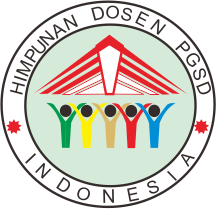DEVELOPMENT OF AUDIO-VISUAL-BASED MINIATURE LABUFER (STRUCTURE OF THE EARTH'S LAYERS AND ATMOSPHERE) TO IMPROVE LEARNING OUTCOMES OF GRADE V STUDENTS IN JAMBANGAN ELEMENTARY SCHOOL
DOI:
https://doi.org/10.55719/elenor.v3i1.1340Keywords:
Media, Labufer Miniatures, IPAS , Learning outcomesAbstract
This research was conducted to determine the development process and the level of validity, practicality and effectiveness of learning media. The research aims to develop a miniature Labufer product (structure of the layers of the earth and atmosphere) based on audio visuals to improve the learning outcomes of class V students at SDN Jambangan. Product development is carried out using the ADDIE model which consists of five stages: analyze, design, develop, implement and evaluate. The data collection instruments used include validation sheets from material experts, media experts, teacher and student response questionnaires, and student evaluation test sheets. The validation test results show that the audio-visual-based Labufer Miniature (Structure of the Earth's Layers and Atmosphere) is very valid with a percentage of 94.5% from material experts, 94.7% from media experts, and 80% from language experts. The practicality test by the teacher showed a percentage of 87.2% which was declared practical and by students showed a percentage of 98% which was declared very practical. Meanwhile, the effectiveness test obtained a percentage of 87.5% which was declared effective. Based on the results obtained, the Miniature Labufer (Structure of the Layers of the Earth and the Atmosphere) audio-visual media developed is very valid, very practical and effective for use in the learning process.
Keywords:
Media, Labufer Miniatures, IPAS , Learning outcomes
Downloads
References
N. 20. 200. UU, sisten pendidikan nasional, “Undang-Undang Republik Indonesia No 20 Tahun2003 Sistem Pendidikan Nasional,” vol. 4, p. 4, 2003.
J. B. Manalu, P. Sitohang, N. Heriwati, and H. Turnip, “Prosiding Pendidikan Dasar Pengembangan Perangkat Pembelajaran Kurikulum Merdeka Belajar,” Mahesa Cent. Res., vol. 1, no. 1, p. 81, 2022, doi: 10.34007/ppd.v1i1.174.
Kemendikbud, “Ilmu Pengetahuan Alam dan Sosial ( IPAS ) CP,” 2022, p. 4.
T. Halawa, “PENGARUH MEDIA PEMBELAJARAN TERHADAP MINAT BELAJAR,” vol. 3, no. 1, p. 45, 2022.
W. Wiratsiwi, “Tingkat Keefektifan Media Papercraft Struktur Bumi dan Matahari terhadap Hasil Belajar IPA Siswa Kelas V SDN Gedongombo III Kecamatan Semanding Kabupaten Tuban,” J. Pendidik. Dasar Nusant., vol. 5, no. 1, p. 135, 2019, doi: 10.29407/jpdn.v5i1.13084.
Zalifah, “Pengembangan Media Miniatur Transportasi,” 2021.
Q. Nishfatul, “Penerapan Media miniature 3d Guna Meningkatkan Pemahaman Siswa Pada Mata Pelajaran Fiqih Kelas VIIIA MTs Almaarif 02 Singosari Malang,” UIN Malang, 2016.
Sari, I. Helsy, R. Aisyah, and F. S. Irwansyah, Modul MEDIA PEMBELAJARAN. 2019.
Sugiyono, METODE PENELITIAN KUANTITATIF KUALITATIF dan R&D, 2019th ed. Bandung: Alfabeta,cv, 2019.
M. Marisa, “Inovasi Kurikulum ‘Merdeka Belajar’ di Era Society 5.0,” Santhet (Jurnal sejarah, Pendidiikan dan Humaniora), vol. 5, no. 1, p. 12, 2021, doi: 10.36526/js.v3i2.e-ISSN.
F. Hidayat and M. Nizar, “Model Addie (Analysis, Design, Development, Implementation and Evaluation) Dalam Pembelajaran Pendidikan Agama Islam,” J. Inov. Pendidik. Agama Islam, vol. 1, no. 1, p. 29, 2021, doi: 10.15575/jipai.v1i1.11042.
P. Aprillianti and W. Wiratsiwi, “Pengembangan E-book Dengan Aplikasi Book Creator pada Materi Bangun Ruang Untuk Siswa Kelas V Sekolah Dasar,” Pros. Semin. Nas. Penelit. dan Pengabdi. Masayarakat, vol. 6, no. 1, p. 83, 2021, [Online]. Available: http://prosiding.unirow.ac.id/index.php/SNasPPM



















